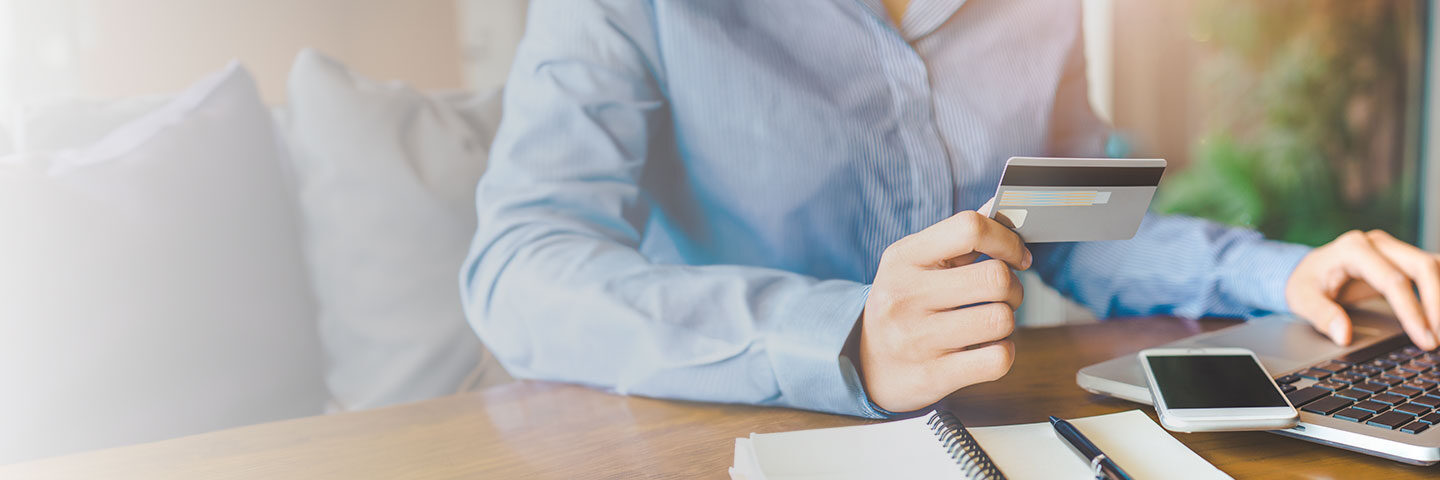People fall into credit card debt for many different reasons, from having emergency medical bills, to splurging on a purchase (or several), or racking up late fees and interest charges. Credit card debt is easy to accrue and sometimes much harder to get rid of. But with some planning and focus, you can pay it down and become credit card-debt-free.
Strategies to help you get out of credit card debt
To reduce—and ideally ultimately eliminate—credit card debt, you need a plan. And equally important, you need the dedication to stick to it. Below are some popular strategies, but be aware that they aren’t cookie-cutter plans—they might not all work for your situation or mindset.
The debt snowball
With this strategy, you pay down your smallest debt first, while still making the minimum payments for your other debts. Once the smallest debt is paid, you apply that “extra” money to paying off the next smallest debt and so forth, until all of your credit card debt is gone. Many people like this approach because they can see quick success in getting rid of those first few small debts. However, this strategy doesn’t account for differences in interest rates, so you might end up paying higher-interest cards for longer, which could increase your overall spending.
The debt avalanche
This strategy has you focus on debts with the highest interest rates first. While you pay the minimum expected for other debts, you knock out the total owed to a high-interest-rate card, to help minimize the amount you shell out in interest overall. Once you’ve paid off the highest-interest-rate card, you apply all of that “extra” money to the payment of the card with the next highest interest rate and so forth, until all of your credit card debt is gone. This approach could work if you’re motivated by paying the least amount overall; however, it doesn’t give you the quick wins that the debt snowball approach does if these cards have higher balances, so you might find it too easy to give up on.
Debt consolidation loan
In some cases, you can get a lower interest rate with a personal loan than you have with your credit cards. If you can secure a large enough loan, you could pay off all of the credit card debt, make only one payment per month, and pay the least amount toward overall interest. If you choose this route, be sure that you understand the terms of the loan agreement so that you don’t wind up with surprise fees. This type of loan may require you to make a larger monthly payment, because you pay principal and interest on these loans and they are amortized over a shorter term than if you were just making the minimum payments on your credit cards.
Balance transfer credit card (credit card refinance)
Some credit card companies will allow you to get a credit card with an introductory balance transfer offer. Many times, this introductory offer is as low as 0% for a certain amount of time. With no interest to pay, the entirety of your payment goes to the debt, so you might have a shot at paying it down or even off during the introductory period. However, typically, if you are late on a payment, the company will rescind the introductory offer, and you’ll find yourself saddled with the original—or higher—interest rate on the total debt. Plus, if you don’t pay off the entire transfer amount, the remainder will be due at the card’s regular balance transfer APR, which could also be higher than what you initially had.
Pay more than the minimum
If you pay more than the minimum payment each month, the extra usually goes directly to the debt versus to interest, so you pay less over the life of the debt, and you knock it out faster than you would by just paying the minimum. This approach might be best if you don’t have a lot of extra to put towards debt repayment each month. However, it is likely to be a slower approach than the others, which means that you’ll end up paying more for the debt than you might otherwise.
Next steps
If you’re ready to start decreasing your debt, take a few steps to help ensure your success. First, choose the plan that works best for you and that you’re most likely to stick with, or choose another plan that works for you. Figure out your monthly budget for living expenses and how much you’ll have leftover to pay toward your debt. Cut back (or cut out) unnecessary expenses so that all of your funds go toward only necessary spending and paying off your debt. Consider selling items you don’t need to bring in some additional cash. Try not to use your credit cards as you pay them off—the more you use them, the more your debt becomes a moving target. And don’t forget to lean into resources like financial coaching, which can help you focus on your goals and become better financially educated. Bellco Credit Union’s preferred vendor, GreenPath Financial Wellness, provides members with professional financial counseling that includes advice on paying off credit card debt, student loan options, and improving your credit score.



